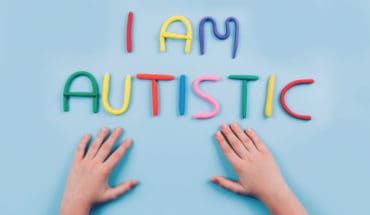Self-harm is when someone deliberately hurts or injures him or herself.
This can take a number of forms including: cutting, taking overdoses of tablets or medicines, punching oneself, throwing their bodies against something, pulling out hair or eyelashes, scratching, picking or tearing at one’s skin causing sores and scarring, burning, inhaling or sniffing harmful substances.
Self-harm is often also referred to by other names such as deliberate self-harm, attempted suicide, para-suicide, self-mutilation and self-injury.
Some people self-harm on a regular basis while others do it just once or a few times. For some people it is part of coping with a specific problem and they stop once the problem is resolved. Other people self harm for years whenever certain kinds of pressures or feelings arise.
A few people who self-harm may go on to commit suicide, but generally this is not what they intend to do. It has been suggested that self-harm can be seen as the ‘opposite’ of suicide as it is often a way of coping with life rather than of giving up on it.
A person who self-harms is likely to have gone through very difficult, painful experiences as a child or young adult. The experience might have involved physical violence, emotional abuse, or sexual abuse. They might have been neglected, separated from someone they loved, been bullied, harassed, assaulted, isolated, put under intolerable pressure, made homeless, sent into care, into hospital or to other institutions.
Experiences such as these can erode self-esteem. For some this is linked to poor body image, eating disorders, or drug misuse. Understanding why people self harm involves knowing as much as possible about their lives and lifestyles. In younger people, peer pressures may occasionally be the most important reason for self harm. Young people may find themselves among friends or other groups who self harm and may be encouraged or pressurised to do the same.
Emotions that have no outlet may be buried and blocked completely out of awareness. By the time adulthood is reached, self-injury can be a way of expressing pain, punishing oneself and keeping memories at bay.
There is often an absence of pain during the act of self-injury, rather like the absence of sensation that often occurs during abuse or trauma. The body produces natural opiates, which numb it and mask the emotions, so that little is felt or realised consciously.
Other people use self-harm as a way of coping when extreme feelings of fear, anger, guilt, shame, helplessness, self-hatred, unhappiness, depression or despair can build up over time and become unbearable.
Reasons given for their self-harm include:
a) When the level of emotional pressure becomes too high it acts as a safety valve – a way of relieving the tension
b) Cutting makes the blood take away the bad feelings
c) Pain can make someone feel more alive when feeling numb or dead inside
d) Punishing oneself relieves feelings of shame or guilt
e) When it is too difficult to talk to anyone, self-harm is a form of communication about unhappiness – a way of acknowledging the need for help
f) Self-harm gives a sense of control when other parts of life may not.
About 10 per cent of admissions to UK medical wards are as a result of self-harm. Women are at the most risk of self-harming between the ages of 15 and 19 and men between 20 and 24. Methods of self-harm vary, but the majority of hospital admissions are for drug overdoses – only 5-15 per cent are caused by cutting.
Self-harming behaviour is also significant among minority groups discriminated against by society. Someone who has mental health problems is more likely to self-harm. As are those who are dependent on drugs or alcohol, or who are faced with a number of major life problems, such as being homeless, a single parent, in financial difficulty or otherwise living in stressful circumstances. One important common factor is a feeling of helplessness or powerlessness.
Recent research focusing on young people suggests that 10 per cent of 15-16 year olds have self-harmed, usually by cutting themselves, and that girls are far more likely to self-harm than boys. The most common reason is to find relief from a bad situation.
- Breakthrough in child chronic respiratory diseases - 11th April 2024
- Protein could help detect delayed concussion recovery - 11th April 2024
- New insight into combatting drug-resistant prostate cancer - 11th April 2024






